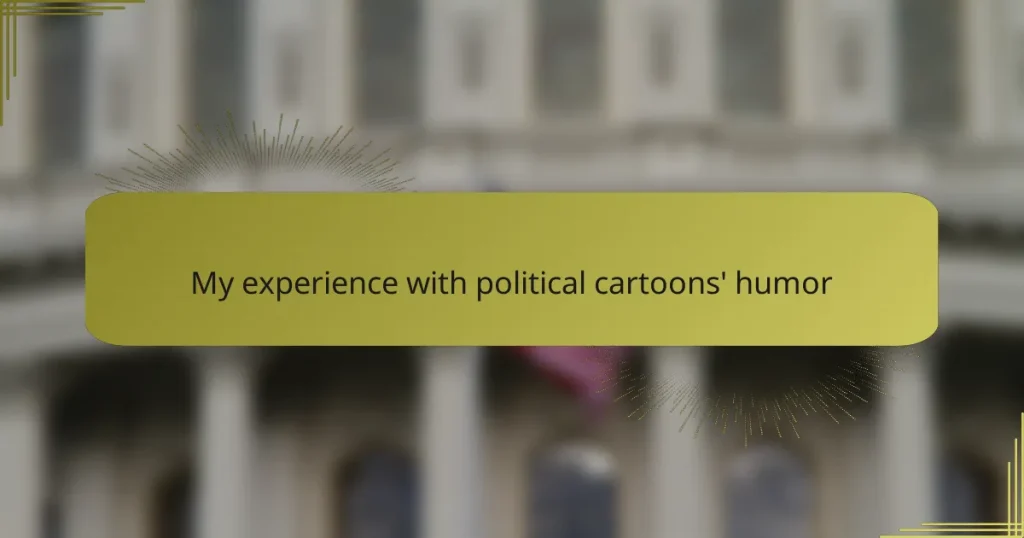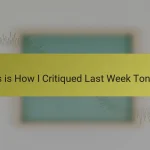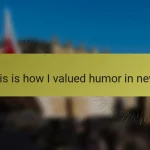Key takeaways
- Political satire awards recognize and celebrate the use of humor to critique political issues, encouraging public discourse.
- Effective political cartoons combine clarity, exaggeration, relevance, emotion, and timing to engage and prompt reflection.
- Political cartoons serve as historical records, capturing societal sentiments and sparking essential discussions about current events.
- Creating engaging political cartoons involves knowing your audience, staying updated on current events, and using simplicity and symbolism effectively.
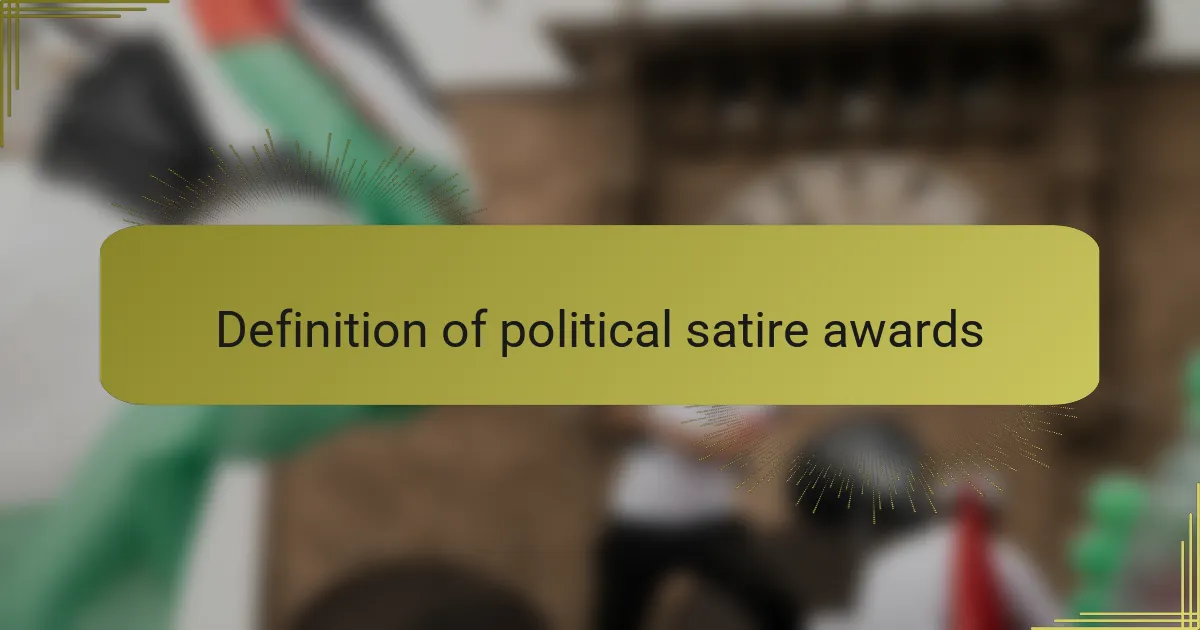
Definition of political satire awards
Political satire awards are recognition given to creators who cleverly use humor to highlight and critique political issues. I find that these awards celebrate the ability to intertwine wit and wisdom, often making complex ideas more digestible for the general public. In my experience, they not only acknowledge talent but also encourage a healthy discourse around the political landscape through humor.
One aspect I appreciate about these awards is how they can elevate a seemingly trivial comic into a powerful commentary on societal issues. When I first encountered political cartoons, I was struck by how a simple drawing could encapsulate an entire narrative, pushing me to reflect on the world around me in ways I hadn’t considered before.
| Type of Award | Description |
|---|---|
| Best Political Cartoon | Acknowledges outstanding political illustrations that provoke thought and dialogue. |
| Outstanding Satirical Series | Recognizes a series of works that consistently deliver sharp commentary on current events. |

Importance of political cartoons
Political cartoons play a crucial role in shaping public opinion. Their clever blend of humor and critique can make pressing issues more approachable, allowing individuals like me to engage with complex topics without feeling overwhelmed. I often find myself chuckling at a cartoon only to realize it’s prompting deeper reflection on the political climate.
I remember a particular cartoon that highlighted a political scandal; it was both hilarious and infuriating. It used exaggeration to expose hypocrisy, and I couldn’t help but marvel at how one clever image could ignite conversations among friends. This experience made me realize that political cartoons possess a unique power—they not only make us laugh but also spark important discussions.
Moreover, political cartoons serve as a historical record of societal sentiments. Looking back at cartoons from past eras, I see how they encapsulate the zeitgeist, revealing what people cared about during specific moments in time. This nostalgia often evokes a sense of shared understanding and connection, reminding us that humor has long been a means to address serious issues.

Elements of effective political cartoons
Political cartoons are a unique medium that can distill complex issues into relatable imagery, often with a sharp twist of humor. For me, the best political cartoons accomplish two things: they make you think, and they make you laugh. I remember a particular cartoon that depicted a politician’s promise as an inflatable balloon—visually catchy, but full of hot air. That moment effectively captured the essence of what many felt—a mix of hope and skepticism.
When considering the elements that make political cartoons effective, a few key components stand out:
- Clarity: The message should be easily understood at a glance, often using simplified imagery and symbols.
- Exaggeration: Amplifying certain features or situations adds humor while highlighting the absurdity of the political climate.
- Relevance: Tying the cartoon to current events ensures the content resonates with the audience, prompting reflection.
- Emotion: Effective cartoons evoke feelings—whether it’s laughter, frustration, or empathy, they connect on a personal level.
- Timing: The impact of a cartoon can be heightened by its release coinciding with political events, enhancing the satire’s potency.
I’ve found that these elements not only amplify the humor but also foster a deeper discussion about the underlying issues at play.
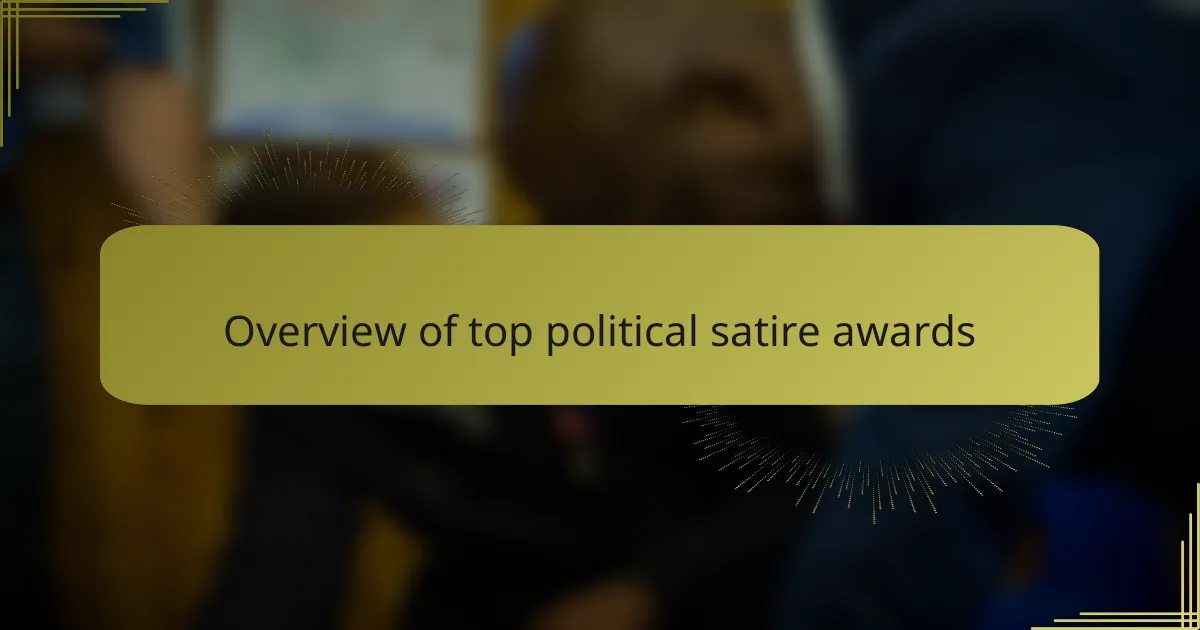
Overview of top political satire awards
Political satire awards celebrate the art of humor in critiquing current events and societal issues. From personal experience, I believe these awards provide a much-needed platform for artists who cleverly use caricature and wit to spark conversations that might otherwise go unnoticed. When I first came across a political cartoon that poignantly captured the absurdity of a major election cycle, I realized the profound impact that humor could have in unpacking complex realities.
Here’s a brief look at some of the most prominent political satire awards:
- The Pulitzer Prize for Editorial Cartooning: This prestigious award recognizes excellence in editorial cartooning and often highlights the finest work that blends humor with political commentary.
- The National Cartoonists Society Awards: These awards celebrate various styles of cartooning, with categories specifically aimed at political satire, showcasing the best of the best.
- The Rufus Award: Aimed at promoting the importance of political cartoons, this award distinguishes particularly impactful pieces that resonate with audiences on pressing issues.
- The Robert F. Kennedy Book Awards: While not exclusively for cartoons, this award often honors works that include significant illustrations and satire addressing social justice themes.
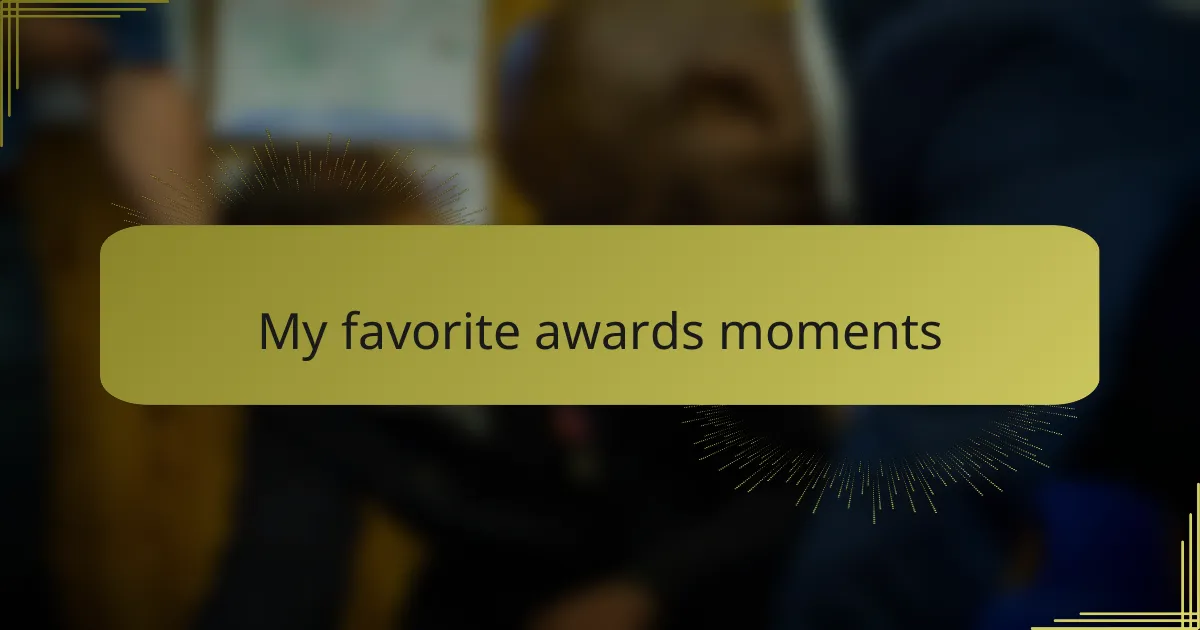
My favorite awards moments
Reflecting on my favorite moments from political satire awards, I can’t help but smile at the creativity on display. One year, a particularly biting cartoon received a standing ovation for its clever twist on a controversial political issue; the energy in the room felt electric. Everyone seemed to share this unspoken bond, a collective appreciation for humor that can shed light on serious matters.
- Watching a live drawing session where artists created rapid-fire cartoons live was unforgettable.
- The laughter that erupted when a cartoonist poked fun at both sides of the aisle was a reminder of how humor can bridge divides.
- I still remember when the audience spontaneously applauded a piece that perfectly captured the absurdity of a headline news story, proving that satire resonates deeply.
- The after-party was equally memorable, as I got to chat with one of my favorite cartoonists who shared the inspiration behind their work, making the experience even more personal.
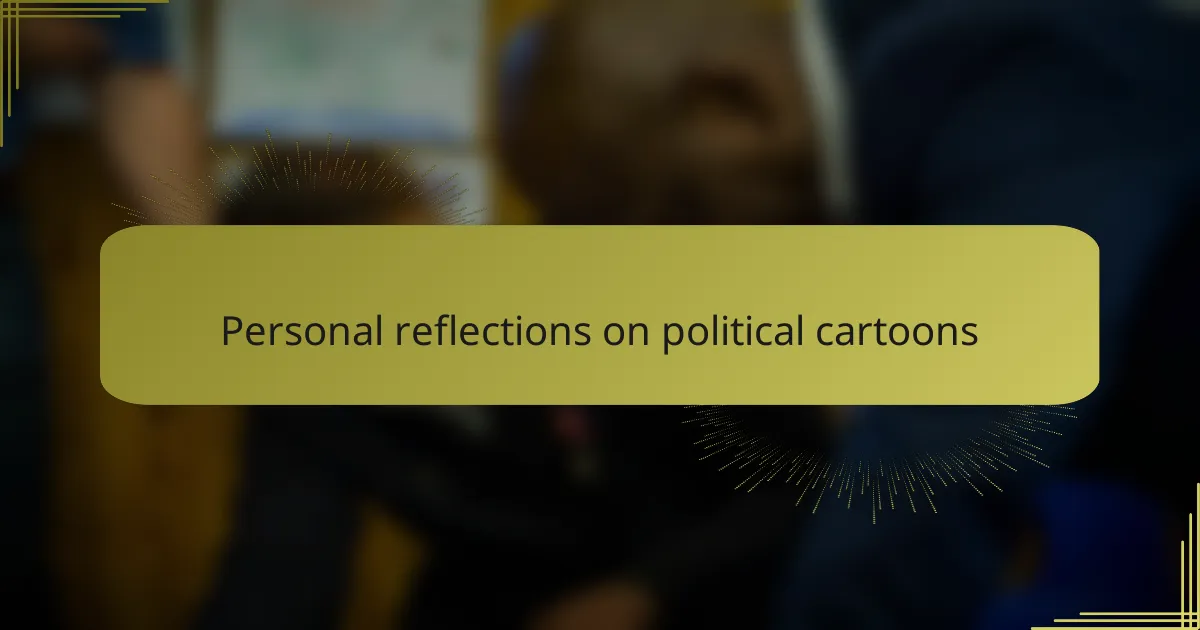
Personal reflections on political cartoons
When I think about my personal experience with political cartoons, I remember the first one that truly made me laugh and think at the same time. It depicted a politician juggling promises while balancing on a tightrope. I was struck by how simply, yet powerfully, a few strokes could express the precariousness of political commitments. It made me question how often we overlook the absurdity of the promises made by those in power.
I’ve often found myself sharing political cartoons with friends during dinner conversations. One particular cartoon featuring a famous politician with an oversized head commenting on their decisions led to a lively debate about the portrayal of authority figures. It was fascinating how humor opened up avenues for discussion that might have felt too serious otherwise. Have you ever experienced that? It’s incredible how a simple image can break down barriers and help us dive into deeper conversations.
Sometimes, after a long day filled with stressful news, I turn to my favorite cartoonists for a dose of humor. Their ability to shine a light on tough issues through clever satire feels like a refreshing perspective. It reminds me that humor can coexist with criticism, serving as both a tool for reflection and a moment of levity. I cherish these moments, as they reaffirm my belief that political cartoons serve not just to entertain, but to engage and provoke thought in a way that words alone often cannot.
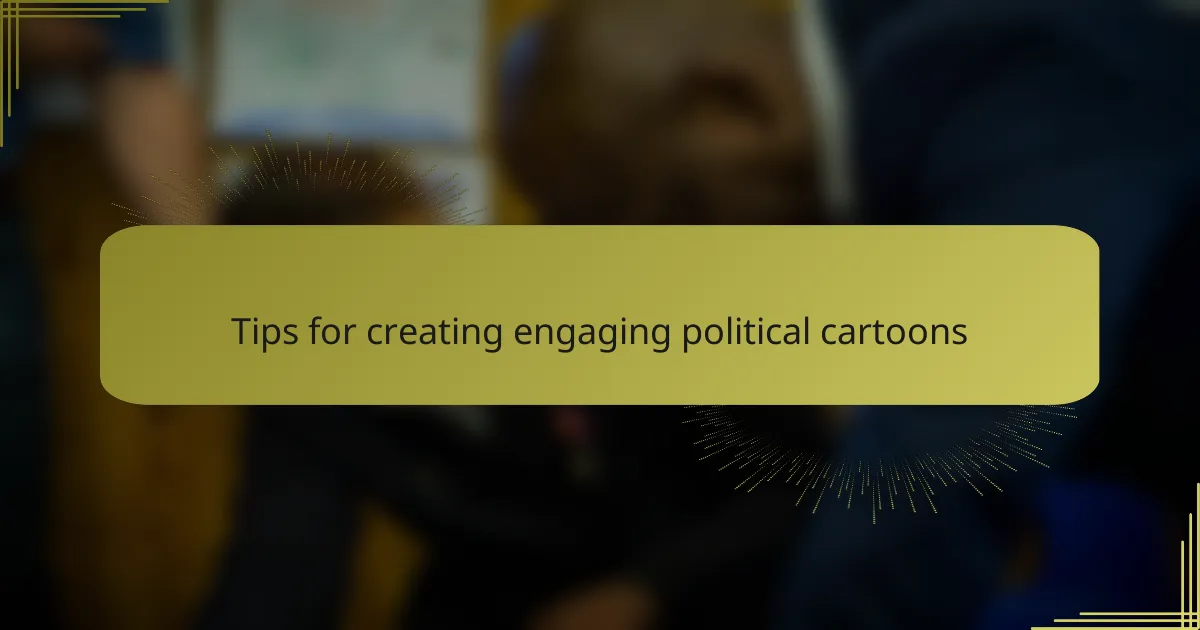
Tips for creating engaging political cartoons
Creating engaging political cartoons requires a keen sense of current events and a dose of creativity. I remember a time when I sketched an illustration that captured my frustration with a political decision. It resonated with many people, proving that humor can be a powerful tool for expressing complex emotions.
Here are some tips to help you along the way:
- Know Your Audience: Understand the values, beliefs, and sense of humor of your target audience.
- Stay Updated: Regularly follow news and political trends to keep your cartoons relevant.
- Simplicity is Key: Focus on a single idea or message to ensure clarity.
- Use Exaggeration: Amplifying features or situations can heighten the comedic effect.
- Incorporate Symbols: Utilize recognizable imagery to convey deeper meanings and connect emotionally.
- Experiment with Styles: Explore different artistic styles to find what resonates best with your message.
- Elicit Reactions: Aim for your cartoon to provoke thought or laughter, making it memorable.
By weaving these elements together, you’ll create cartoons that not only entertain but also enlighten your audience.
